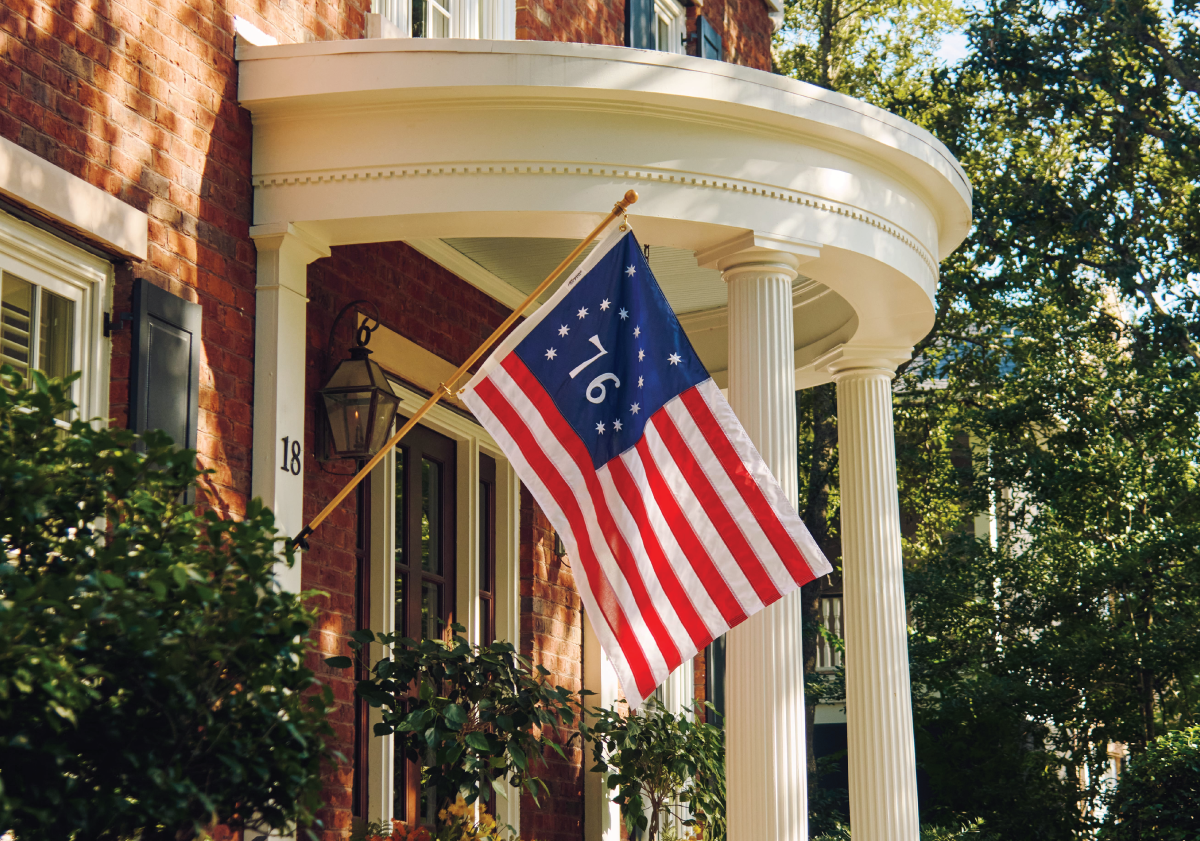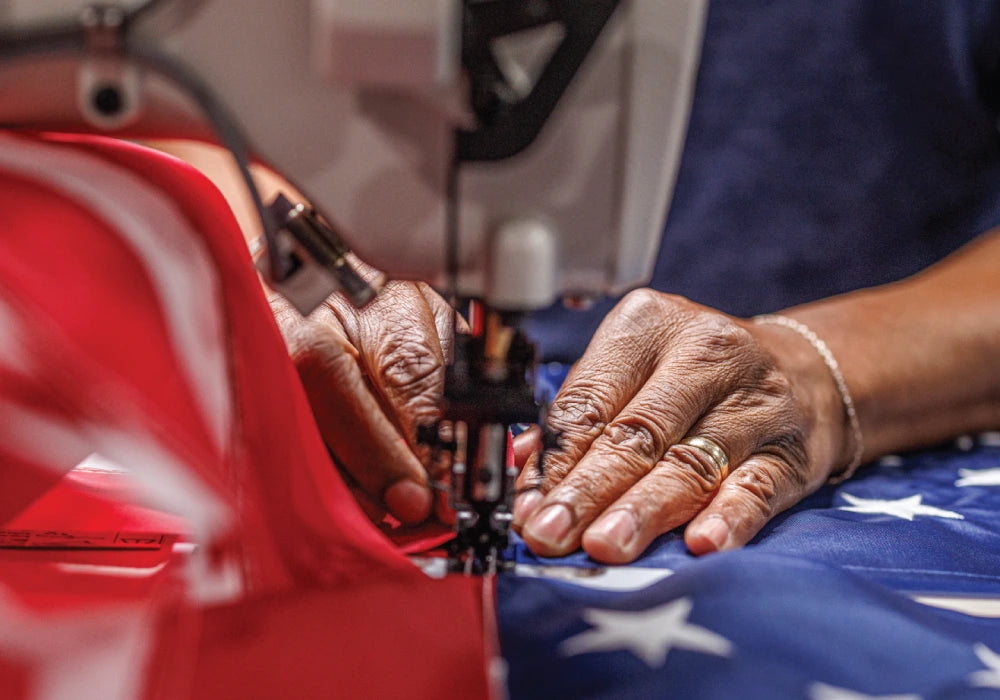The American flag in movies often carries more weight than just being a backdrop or costume detail. It serves as a powerful emblem of national unity, resilience, and sacrifice. Whether it's waving behind a soldier or quietly hanging in a courtroom, its presence can immediately evoke strong emotions tied to history and cultural pride. Directors and cinematographers carefully frame the flag to underscore moments of triumph or tension. This thoughtful use helps turn ordinary scenes into memorable ones. Over time, viewers have come to associate certain film moments with deeper meanings because of this visual cue. The red, white, and blue stripes become a silent narrator, guiding audiences through scenes with a sense of purpose.
Early Depictions of the American Flag in Cinema
Newsreels and Silent Films
In the earliest days of cinema, black-and-white newsreels and silent features often showcased the American military in action, and the flag was front and center. These early moving pictures highlighted battlefield triumphs, homecoming parades, and solemn ceremonies. Through these silent yet powerful images, the U.S. flag symbolism in film began to take root as a visual cue for bravery and sacrifice. Moviegoers didn’t need dialogue to understand what the flag stood for—it was clear from how people responded to it. Soldiers saluting or civilians standing in awe created lasting impressions that transcended the absence of sound. Even without color, the symbolism came through vividly, setting the stage for the following decades of patriotic storytelling.
Mid-Century War Dramas and Studio-Era Heroism
During the golden age of Hollywood, war dramas became a popular way to rally support and build national pride. Films made in the 1940s and 1950s often ended with the flag flying high, especially as the final scene to signify victory or moral clarity. In this era, the U.S. flag imagery in film became more stylized and dramatic, emphasizing heroism and unity. Directors used the flag to bring emotion to stories about sacrifice and honor, particularly in films centered around World War II.
The Evolution of Flag Iconography in Hollywood
As decades passed, the way filmmakers used the American flag changed to reflect the times. From post-war optimism to post-60s skepticism, the flag’s image evolved to include both reverence and critique. No longer limited to just battlefields, it began appearing in schools, small towns, and even rebellious scenes. This shift allowed for a broader American flag representation in film, one that included questions, complexities, and cultural commentary. Filmmakers started to place the flag in moments of quiet introspection or moral struggle, not just action or triumph. This opened the door for more nuanced stories and deeper emotional engagement from viewers.
Shaping Patriotic Sentiment Through Vintage Film
Classic films had a way of linking patriotism to everyday life. They showed characters who valued their country in uniform and through acts of kindness, responsibility, and courage. These stories helped shape public perception of what it meant to be American, often using the flag as a visual reference. Audiences watching these vintage films came to associate the flag with more than war—it became tied to personal integrity and civic duty. The flag moments in U.S. films from this period often emphasized unity during hardship, reinforcing ideals viewers could carry with them outside the theater. Through these depictions, filmmakers planted seeds of American patriotism that influenced cultural attitudes for decades.
Memorable Patriotic Flag Moments in Major Films
“Flags of Our Fathers” and the Iwo Jima Reenactment
Clint Eastwood’s Flags of Our Fathers captures one of cinematic history's most enduring flag moments by recreating the famous Iwo Jima flag raising. This scene isn’t just a reenactment—it’s an emotional reimagining of a real-life event that shaped national memory. The image of Marines lifting the flag on the battlefield becomes a visual thread tying courage to legacy. The patriotic flag moments in this film remind viewers of the cost of freedom while honoring those who paid it.
Rocky’s Victory Drape and Sports-Driven Patriotism
In Rocky IV, the moment when Rocky drapes the American flag over his shoulders after a hard-fought win in the boxing ring speaks volumes. This act symbolizes more than personal triumph—it becomes a metaphor for endurance, unity, and international respect. Within the film’s Cold War context, the flag's presence adds depth to the final victory. It’s one of the most recognizable iconic American flag scenes, and it lingers in viewers' minds long after the credits roll.
“Apollo 13” and the Flag in Space Exploration Cinema
The flag is a quiet but persistent reminder of national ambition, from mission patches to spacecraft interiors. When the astronauts return safely, their presence becomes a symbol of collective success against daunting odds. This film shows how the U.S. flag representation can connect innovation with pride. Unlike scenes focused on combat or protest, here the flag complements a story about human ingenuity and survival. It reflects a spirit of progress while grounding the national identity narrative, celebrating unity through science and teamwork.
“Captain America” and the Superhero Shield Symbolism
Marvel’s Captain America: The First Avenger takes the flag's symbolism to a new level by making it part of the main character’s identity. Steve Rogers doesn’t just wear stars and stripes—he lives the values they’re meant to represent. His shield, designed in the flag's likeness, becomes both a defensive weapon and a symbol of justice. In this context, the U.S. flag online store might even see spikes in interest as fans seek to emulate the superhero’s image. The film cleverly turns the flag into something aspirational, reaching younger viewers through action-packed storytelling.
Techniques That Amplify U.S. Flag Symbolism in Film
Framing, Color Contrast, and Slow Motion for Impact
Directors often rely on camera techniques to enhance the emotional effect of the American flag onscreen. One common method is framing the flag in wide shots during key scenes to emphasize its scale and importance. In moments of transformation or climax, slow motion is frequently used to extend the viewer’s emotional response. Color contrast also plays a major role—the flag's bright red, white, and blue often stands out against darker or more muted backgrounds, drawing attention to its presence.
Flag Waves in Parade
Group scenes that involve parades or public events often make the flag a focal point. Directors choreograph crowds to move around or respond to the flag in synchronized ways, turning it into a centerpiece of the scene. These visuals are especially powerful during celebrations or memorials, as they capture collective emotion and shared pride. The flutter of a flag waving above a cheering crowd carries weight, even without dialogue.
Textural Choices
The material used for a flag on camera can significantly change how it’s perceived. Here are a few ways these choices affect cinematic interpretation:
- Silk Flags: Silk is often chosen in visual media for its luxurious, light-catching properties that give scenes an ethereal or ceremonial quality. When hit by direct or ambient light, silk produces a gentle glow and a fluid motion that elevates the scene’s elegance. Its lightweight nature allows it to flutter with the slightest breeze, introducing a sense of grace or quiet reverence. Directors frequently use silk flags in scenes depicting honor, mourning, or spiritual resolve because the fabric’s movement feels intentional and poetic. The delicate shimmer of silk can make the flag seem almost otherworldly, perfect for highlighting themes of hope, transcendence, or sanctity. In slow-motion shots or backlit frames, silk creates a halo effect that reinforces solemnity and beauty.
- Canvas Flags: Because of its weight, canvas moves slowly, if at all, requiring stronger wind to show motion. This stillness adds a dramatic sense of defiance or immovability, making it ideal for scenes depicting conflict, hardship, or perseverance. Canvas absorbs more light and doesn’t shimmer like silk, resulting in a matte appearance that aligns well with gritty narratives. It evokes the durability of old war flags, maritime standards, or flags flown in harsh, unforgiving environments. Cinematically, canvas lends itself well to grounded, historical dramas where visual texture matters. Close-up shots of frayed edges or stitched seams emphasize the flag’s wear and history, adding to the story’s authenticity.
- Backlit Flags: Lighting a flag from behind can produce powerful silhouette effects, transforming the fabric into a dramatic focal point. When backlit, the flag’s edges glow while its body may darken or become semi-translucent depending on the fabric. This method can highlight themes of mystery, reverence, or unity, often creating a scene that feels larger than the individual characters within it. It allows for the interplay between visibility and obscurity, emphasizing the outline of the flag while hinting at its internal details. This lighting choice often evokes emotion in scenes dealing with sacrifice, legacy, or national identity.
Textural and lighting choices in flag presentations are more than stylistic—they’re narrative tools that shape how audiences interpret the moment.
Subtle and Symbolic Uses of the Flag in Diverse Genres
Courtroom Dramas
Legal dramas often understate the flag, placing it in the background during pivotal testimony or rulings. It may stand behind a judge, sit in a corner of the courtroom, or be reflected in glass as characters debate justice. These placements suggest that the flag is silently witnessing the pursuit of truth and fairness. In such scenes, the U.S. flag representation becomes more than decor—it acts as a reminder of the rights and values being defended. Its quiet presence enhances the weight of the moment, reinforcing the idea that every decision made carries national significance.
End-Zone Banners in Sports Films
Sports films frequently feature the flag at championship moments, not through forced patriotism but as a natural expression of communal pride. In Miracle, for example, the American flag becomes part of the arena’s background, yet its visual impact is undeniable during the team’s victory. Similarly, in Remember the Titans, the flag often appears during games, subtly underscoring the unity forged on the field. The American flag retailers may not be on the viewer’s mind at the time, but the sense of national pride sparked by these scenes often lingers.
Sci-Fi and the American Flag on Extraterrestrial Soil
When characters plant the American flag on alien worlds or distant moons, it serves as a claim of exploration and a statement of cultural identity. This visual cue bridges the gap between Earth-bound viewers and interplanetary settings in films like Interstellar or The Martian. Here, the online flag shop might seem worlds away from the futuristic landscapes, but the flag connects both spaces emotionally.
Cultural Impact and Viewer Response to Patriotic Scenes
Emotional Resonance
The most impactful flag scenes in film transcend their visual elements by resonating with the viewer on a deeply emotional level. Below are the key reasons these cinematic moments continue to move viewers long after the credits roll:
- Personal Connections: One reason certain flag shots remain deeply memorable is that they trigger personal associations for many viewers. Whether it's a family member who served in the military, participation in a national moment of silence, or memories of school ceremonies, the flag often holds unique emotional weight for individuals. When a flag appears on screen, these personal histories quietly resurface, creating a layered emotional response. A folded flag handed to a grieving widow or a flag being raised at a soldier’s return can mirror real-life experiences, evoking a sense of shared identity and personal loss.
- Universal Symbolism: The American flag carries a wealth of universal symbolism that transcends language, age, and cultural background. It can represent freedom, hope, sacrifice, or collective resilience. When filmmakers incorporate the flag into emotionally charged scenes, it becomes more than a prop; it becomes a visual metaphor for enduring ideals. Whether waving in slow motion during a victory or draping a casket in silent tribute, the flag evokes an almost instinctive emotional response. Its visual presence reinforces values deeply embedded in the national psyche, such as courage under fire or strength through unity. Even international viewers, though removed from the flag’s direct cultural meaning, often interpret it as a symbol of leadership, democracy, or struggle.
- Emotional Music: Music is critical in shaping how flag scenes are experienced and remembered. A well-timed musical score can evoke pride, sorrow, triumph, or nostalgia in ways that spoken dialogue often cannot. In scenes where the flag is raised, lowered, or presented, filmmakers frequently pair visual symbolism with orchestral swells, somber strings, or patriotic melodies to guide the viewer’s emotional reaction.
The most enduring flag scenes in film succeed because they transcend their literal function, inviting audiences into an emotional space that feels personal, symbolic, and deeply human.
Driving Online Searches and Flag Purchases
It’s not uncommon for audiences to be inspired by films to take real-life action. After watching a moving film with powerful flag visuals, many people look for ways to express similar pride at home. Some are motivated to search for ways to fly their flags, while others explore the history and meaning behind national symbols. This often leads viewers to buy U.S. flags online, either to commemorate a story that moved them or to bring a sense of shared identity into their space. Film-driven inspiration can even boost interest in civic holidays or ceremonies, with audiences wanting to become more involved.
From Film to Flagpole
Films have led people to join local events, engage in volunteer work, or raise flags at their homes or workplaces. The desire to display patriotism isn't always loud or performative; sometimes it's quiet and thoughtful, rooted in a newfound respect for national values. For many, this leads to a visit to an online American flag store to make that inspiration tangible. Through this connection between film and action, the flag continues to symbolize unity that brings meaning to the screen and society.
The American flag continues to hold a timeless place in film because it represents something larger than any single character or storyline. Its appearance is rarely accidental. Filmmakers use it to invoke deeper themes, such as justice, perseverance, and national identity, all within the framework of visual storytelling. For audiences, the emotional pull of these scenes often transcends the theater experience. That connection leads many to purchase American flags online, turning symbolic inspiration into visible acts of pride.






